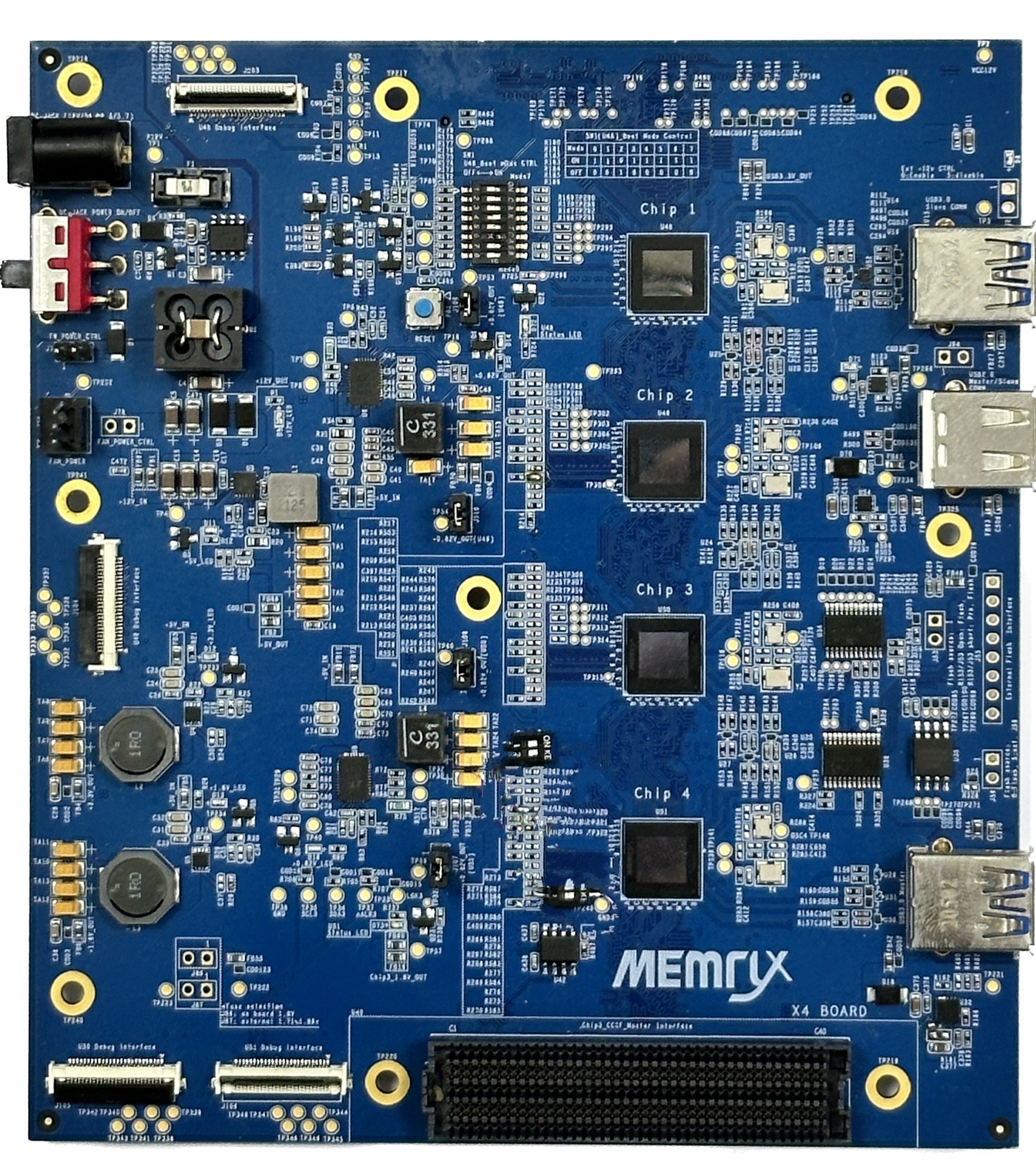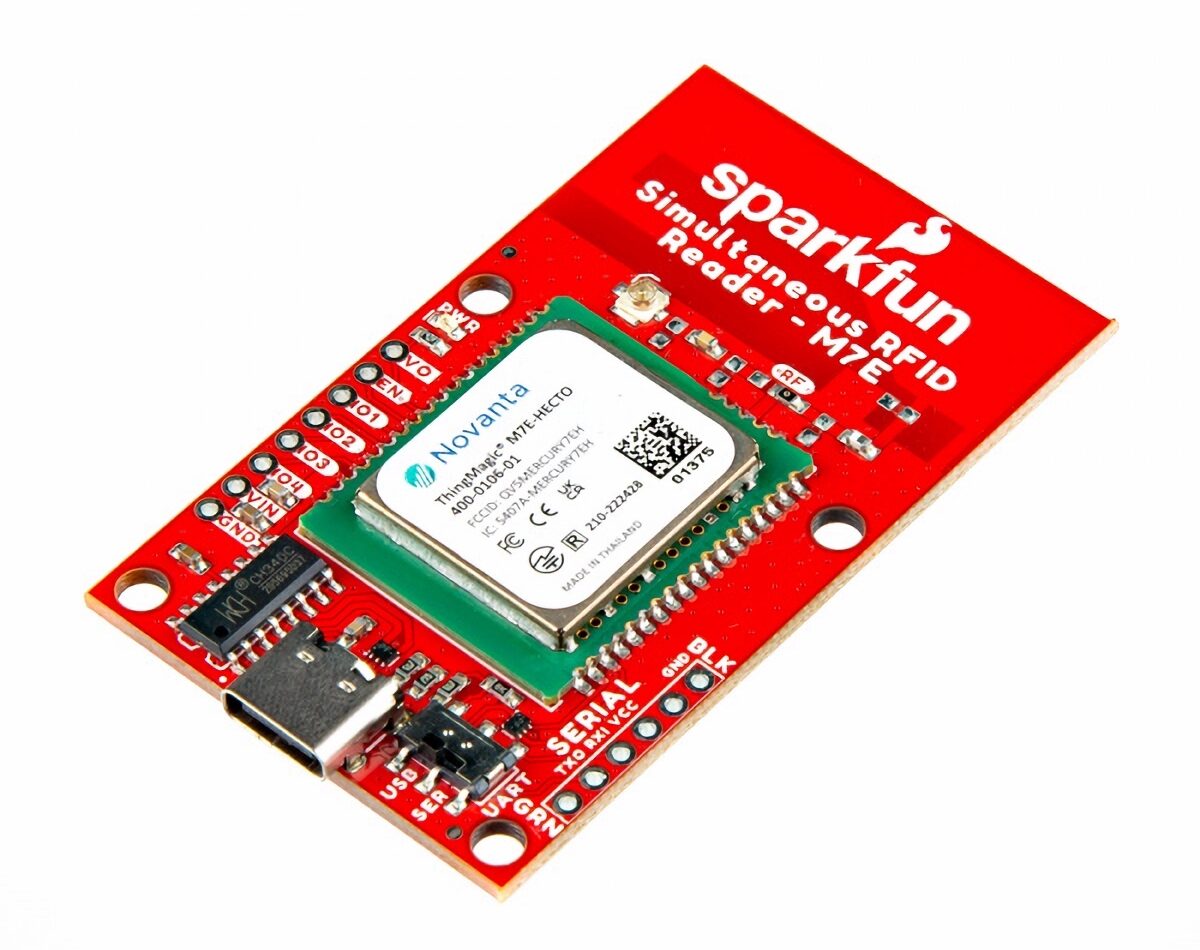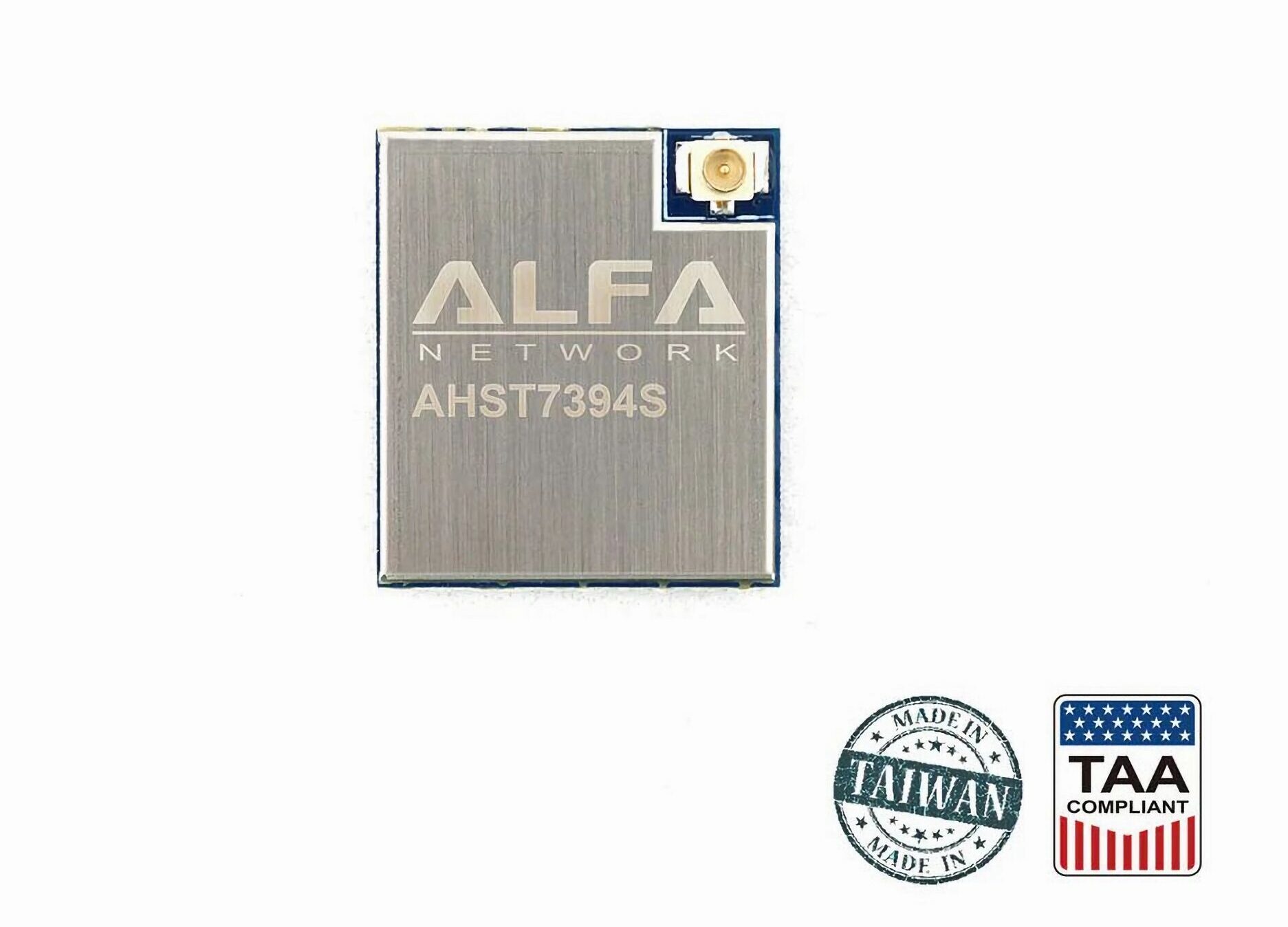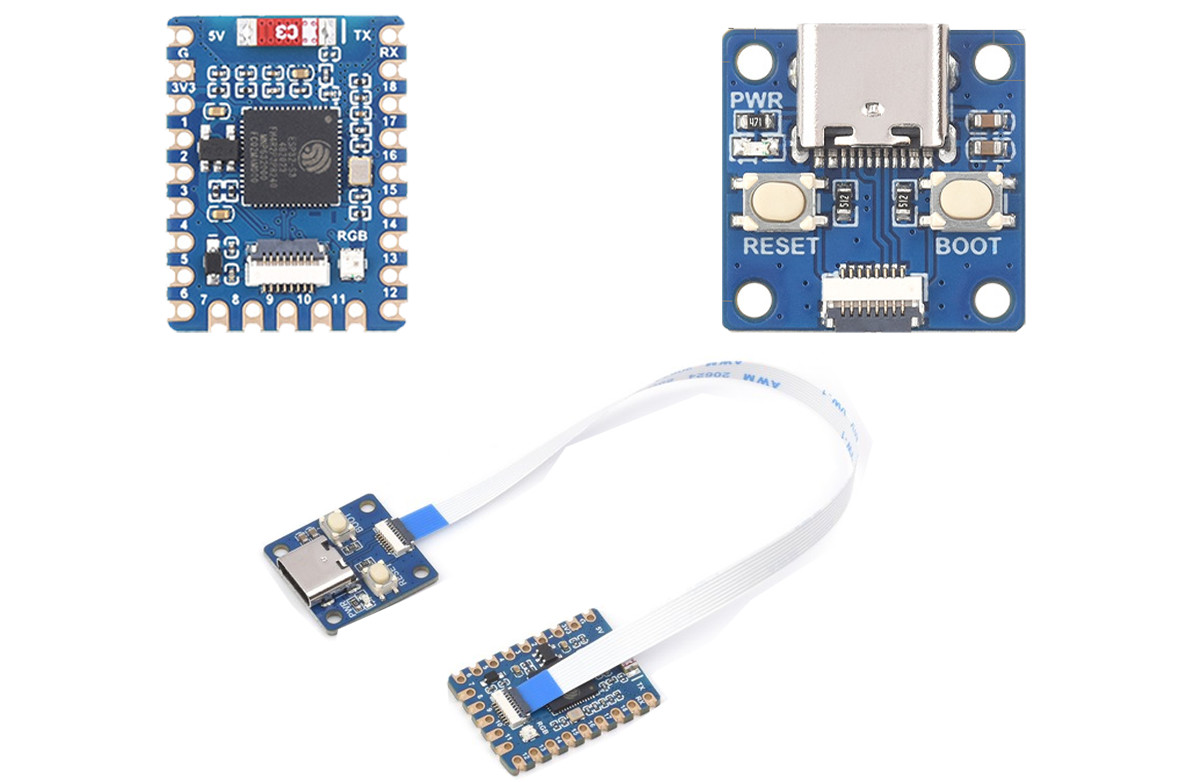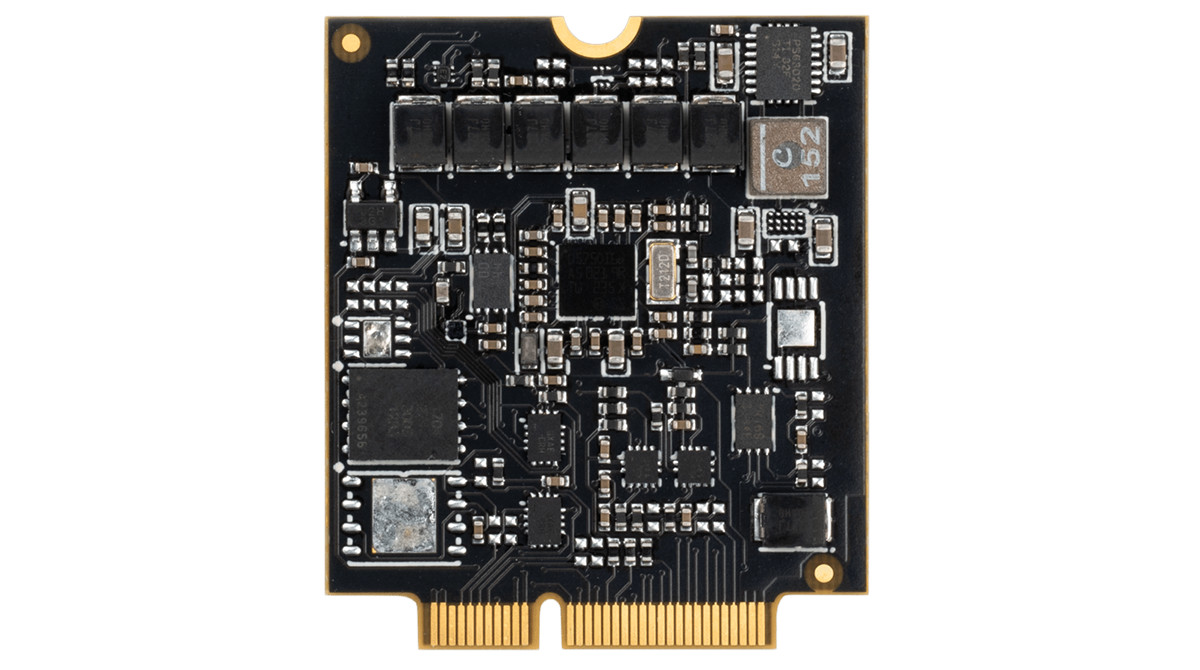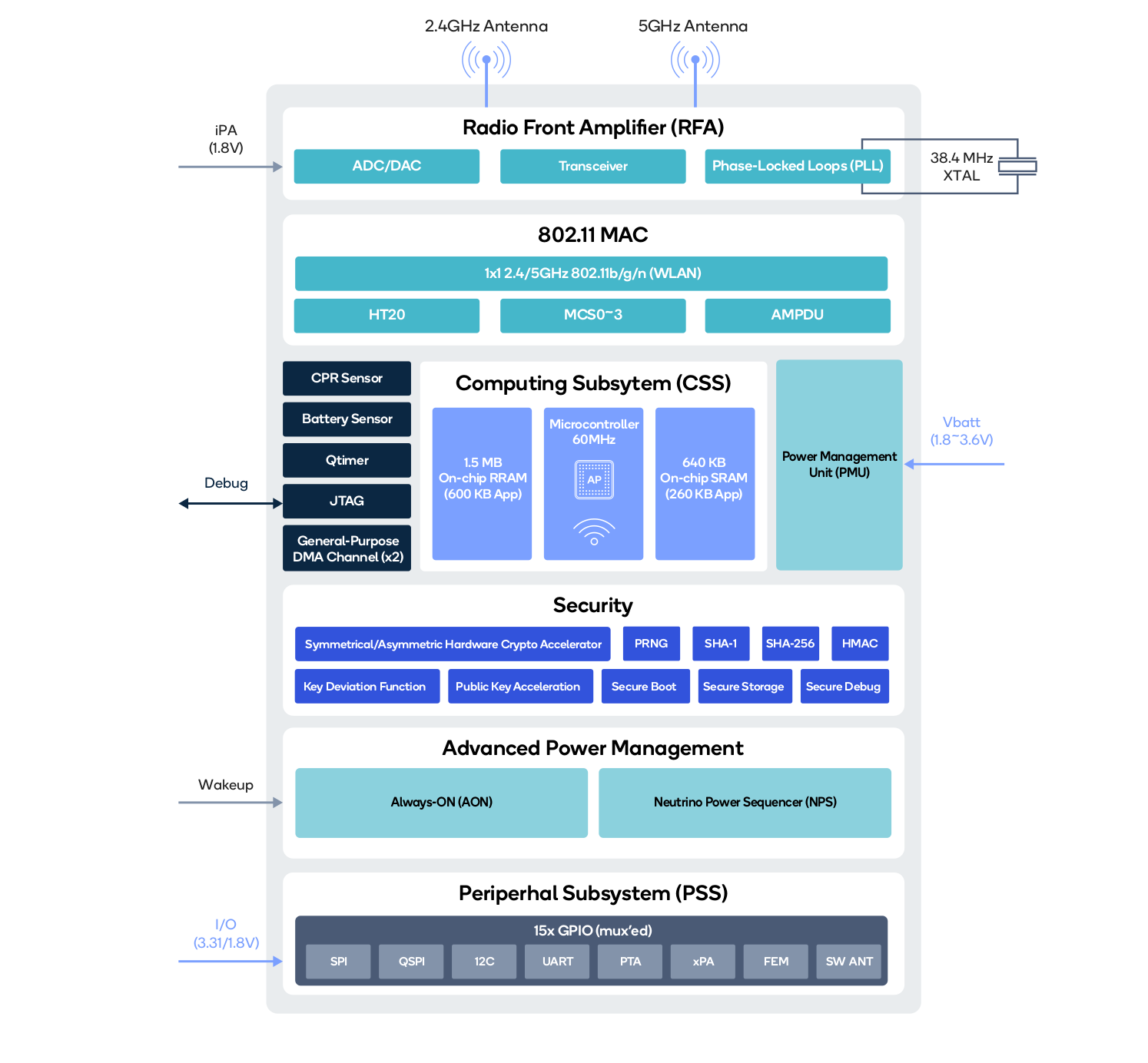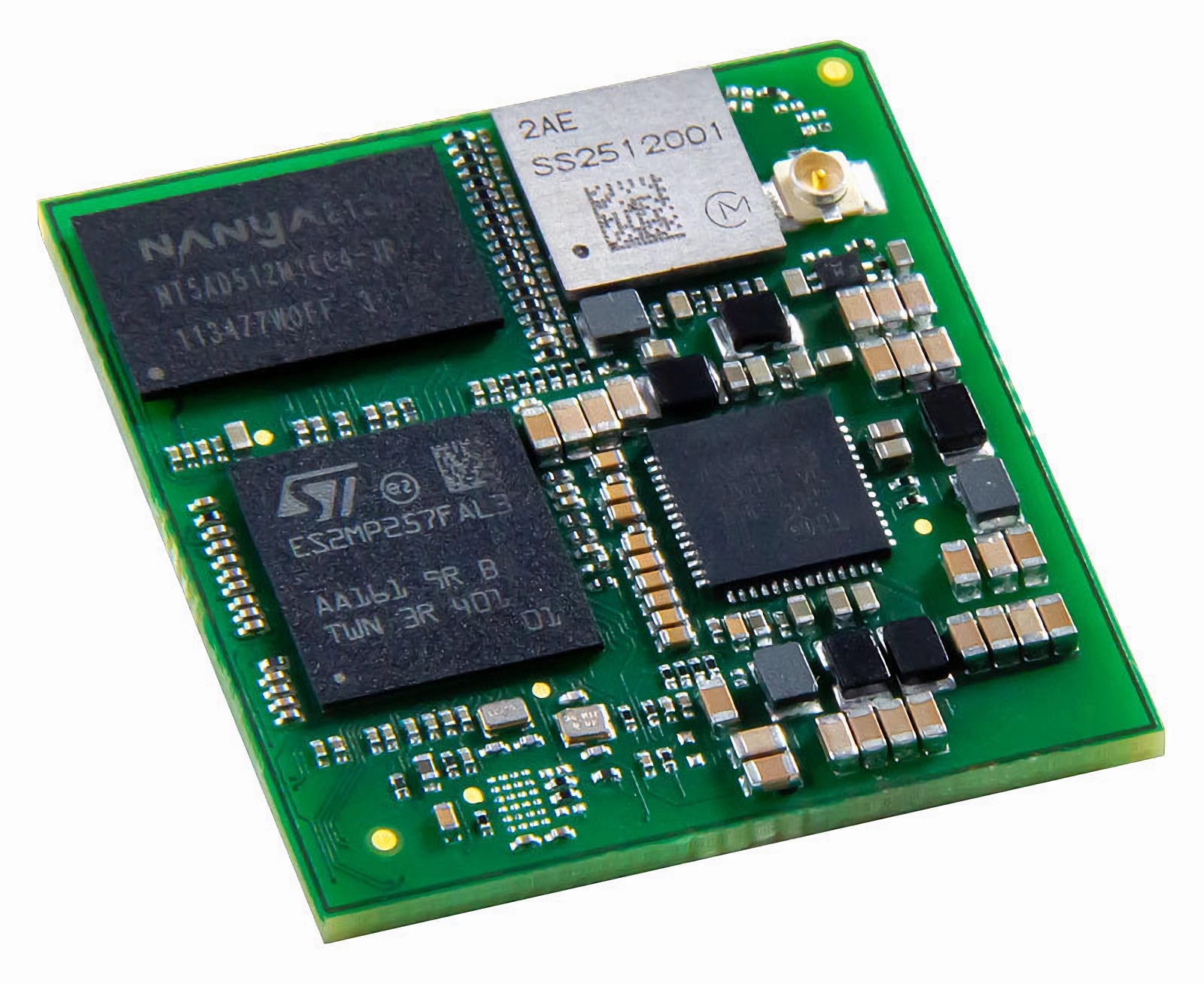Jean-Luc noted the MemryX MX3 edge AI accelerator module while covering the DeGirum ORCA M.2 and USB Edge AI accelerators last month, so today, we’ll have a look at this AI chip and corresponding modules that run computer vision neural networks using common frameworks such as TensorFlow, TensorFlow Lite, ONNX, PyTorch, and Keras. MemryX MX3 Specifications MemryX hasn’t disclosed much performance stats about this chip. All we know is it offers more than 5 TFLOPs. The listed specifications include: Bfloat16 activations Batch = 1 Weights: 4, 8, and 16-bit ~10M parameters stored on-die Host interfaces – PCIe Gen 3 I/O and/or USB 2.0/3.x Power consumption – ~1.0W 1-click compilation for the MX-SDK when mapping neural networks that have multiple layers Under the hood, the MX3 features MemryX Compute Engines (MCE) which are tightly coupled with at-memory computing. This design creates a native, proprietary dataflow architecture that utilizes up to 70% […]
SparkFun M7E Hecto is a simultaneous RFID Reader with USB-C connectivity and a range of up to 5m
SparkFun has announced the M7E Hecto, a ‘simultaneous’ RFID reader in a compact form factor and high-performance capabilities. The RFID reader is powered by Jadak’s Hecto module (M7E-HECTO) from the ThingMagic series which offers a wide RF output range from 0 dBm to +27 dBm and reads up to 300 tags/second. SparkFun M7E Hecto builds on the much older M6E Nano RFID reader, adding a USB-C port, increasing the read rate from 150 tags/second, and reducing power consumption. It supports an external antenna (sold separately) which extends the scanning distance up to 16 ft (4.8m) from the 1 to 2 ft (0.3m – 0.6m) range supported by the onboard antenna. It does come with a warning to ensure that personnel are not directly in the radiation beam of the antenna while they are within 21cm of the antenna (to adhere to FCC limits for long-term exposure to RF emissions). The […]
Alfa Networks AHST7394S Wi-Fi HaLow module enables low-power, long-range IoT connectivity up to 1km
Taiwanese wireless equipment manufacturer, Alfa Networks, and US-based Wi-Fi HaLow semiconductor company, Newracom, have collaborated to develop the AHST7394S Wi-Fi HaLow module. The solder-down module is based on Newracom’s NRC7394 SoC, a low-cost and high-efficiency HaLow SoC chipset providing up to 17dbm output power and capable of connecting to a maximum of 8K devices within a single network. The NRC7394 also supports a standalone mode, which enables the execution of a wide range of IoT applications on the embedded ARM Cortex-M3 CPU. While HaLow is more energy-efficient than other Wi-Fi types, low-power operation modes such as legacy, TWT, and WMM-PS can reduce power consumption further. The AHST7394S Wi-Fi HaLow module supports a data rate of up to 15Mbps, over 600 times faster than LoRaWAN while maintaining a good range (over 1km). The second-generation HaLow module is perfect for building long-range, ultra-low-power networks in sub-1 GHz, license-exempt frequency bands. It is a […]
SC730 module from Small Computer Central features the now-discontinued Zilog Z80 CPU
Small Computer Central has released a new module kit, the SC730, for the 80pin-RCBus backplane which features the widely-used 8-bit Zilog Z80 CPU and a memory management unit. The Zilog Z80 is an 8-bit microprocessor created to be compatible with the Intel 8080 microprocessor while offering more advanced features such as built-in DRAM refresh, a better interrupt system, and non-multiplexed buses. The Z80 microprocessor was widely used for various applications between the 70s and the 80s and is still quite popular among retro computing enthusiasts today. Cousins’ SC730 module kit is designed to fit into an 80-pin socket on an RCBus backplane. The module is built to be used with a memory module as part of a complete computer system. The memory management unit (MMU) is compatible with a 1MB linear memory module such as the SC721. It maps a fixed 32KB bank of RAM to the top of the […]
$4.99 ESP32-S3-Tiny board measures just 23.50 x 18 mm
Waveshare has recently released the ESP32-S3-Tiny mini development board powered by ESP32-S3 wireless MCU and measuring just 23.50 x 18 mm. Due to its compact form factor, it does not include a USB-to-UART converter or a USB port. That is why, you will need an additional adapter board with an FPC cable to program it, which costs only $1. Despite its small size, the board is feature-rich. It includes 34 multi-function GPIO pins, along with Wi-Fi, BLE, SPI, I2C, UART, ADC, PWM, and more. The design of the board is very similar to the Raspberry Pi RP2040-powered Waveshare RP2040-Tiny board that we covered last year. However, what sets this board apart is its 34 I/O pins, compared to the 23 found on the RP2040-Tiny board, and wireless connectivity. We’ve also written about several other boards with compact form factors, such as the Unexpected Maker NANOS3 board (28 x 11 mm), […]
Blues launches $19 Notecard XP cellular IoT module and Notecarrier XP series carrier board
Blues has recently released the latest entry to its Notecard family, the Notecard XP (External Power supply), an updated and more cost-effective version of its existing Notecard Cellular. This new model reduces costs by not including certain components, such as SIM switching hardware, an embedded SIM with a data plan, and conformal coating while retaining all key features and functionalities. These include an Arm Cortex-M4 microcontroller, a three-axis accelerometer, a temperature sensor, and a secure element. Additionally, they have also removed the radio power supply to reduce costs further, bringing the price down to just $19. Alongside this release, Blues has also introduced a new “midband” LTE Cat 1 bis Notecard Cellular model, which features a single antenna design making it more compact and economical. In February this year we have seen Blues announced the Blues Starnote IoT Module, along with the Notecarrier A, B, F, and Pi series of […]
Qualcomm QCC730 low-power Arm Cortex-M4F WiFi 4 SoC targets battery-powered IoT applications
Qualcomm has unveiled the “micro-power” QCC730 Arm Cortex-M4F dual-band WiFi 4 microcontroller for the IoT market that targets similar applications as the Espressif ESP32 microcontrollers but potentially at lower power consumption with claims of up to 88% lower power than “previous generations” making it suitable for battery-powered industrial, commercial and consumer applications. To highlight the low-power consumption, the company also mentions that QCC730 devices could become high-performance alternatives to Bluetooth IoT solutions with direct cloud connectivity. Qualcomm QCC730 specifications: CPU core – Arm Cortex-M4F @ 60 MHz Memory/ Storage 1.5 MB RAM, including 600KB for user app (On-chip RRAM (NVM) to host application without the need for an external NOR flash) 640 KB SRAM, including 260KB for user app XiP over QSPI Flash Wi-Fi Standards: 802.11b, 802.11g, 802.11n, 802.11a Spectral Bands: 2.4 GHz, 5 GHz Channels: 20 MHz Antenna Configuration: 1×1 Features: up to MCS3 Interfaces – Master I2C, 15x […]
Digi ConnectCore MP25 SoM targets Edge AI and computer vision applications with STM32MP25 MPU
Digi International has announced its latest system-on-module (SoM), the Digi ConnectCore MP25 SoM, based on STM32MP25 MPU at Embedded World 2024 in Nuremberg, Germany. The Digi ConnectCore MP25 SoM is built upon STMicroelectronics’ STM32MP25 microprocessor. It supports artificial intelligence and machine learning functionality through an integrated neural processing unit (NPU) capable of 1.35 tera operations per second (TOPS) and an image signal processor (ISP). It is powered by two 64-bit Arm Cortex-A35 cores running at 1.5GHz, supported by a 32-bit Cortex-M33 core operating at 400MHz and a 32-bit Cortex-M0+core running at 200MHz. With its machine learning capabilities, support for time-sensitive networking, and versatile connectivity features, the ConnectCore MP25 module is suitable for edge AI, computer vision, and smart manufacturing applications in various sectors, including medical, energy, and transportation. Digi ConnectCore MP25 specifications: SoC – STMicroelectronics STM32MP257F CPU – 2x 64-bit Arm Cortex-A35 @ 1.5 GHz; MCU 1x Cortex-M33 @ 400 […]


